TechRadar Verdict
If you’re looking a future-proof gaming PC that runs beautifully, the HP Omen Desktop PC is a wise choice. It’s very powerful, easily upgradable, and very accessible, not to mention, decently priced.
Pros
- +
High powered
- +
Highly upgradable
- +
Up to 165Hz refresh rates
Cons
- -
Not the best looking PC
Why you can trust TechRadar
The HP Omen Desktop PC proves that power and price can, in fact, go hand-in-hand. While souped-up machines can cost a small fortune, and budget ones can have too many compromises, mid-range machines such as this one offer the most ideal value, balancing price and performance that most gamers will appreciate.
If you’re looking for bargain-basement price tags, make no mistake. The HP Omen Desktop PC isn’t going to be the cheapest. Our review model, in fact, comes in at $2,300. However, it is relatively affordable for a potent gaming PC, and one that leaves plenty of room for expansion, making it future-proof. And, it will give you great performance for a lot less than other powerful options out there.
Here is the HP Omen Desktop PC configuration sent to TechRadar for review:
CPU: 3.7GHz Intel Core i7-8700K (hexa-core, 12MB Cache, up to 4.7GHz)
Graphics: Nvidia GeForce GTX 1080 Ti (11GB GDDR5X)
RAM: 32GB dual channel DDR4 (2666MHz)
Motherboard: HP Proprietary 8437
Power Supply: 750W power supply
Storage: 512GB SSD, 1TB HDD (7,200 RPM)
Ports (front): 1 x headphone, 1 x microphone, 1 x SD card reader, 2 x USB-C, 2 x USB 3.0
Ports (rear): 2 x USB 2.0, 4 x USB 3.0, 1 x microphone 1 x 3.5mm line out, 1 x 3.5mm line in, 3 x HDMI, display port, Ethernet
Connectivity: Realtek RTL8822be 802.11ac PCIE with Bluetooth 4.2 adapter
Operating system: Windows 10 Home
Weight: 30.2 pounds (13.7 kg)
Size: 18.75 x 18.5 x 7.5 inches (47.6 x 46.99 x 19.05 cm: W x D x H)
Price and availability
While many gaming PCs of its caliber will cost you an arm and a leg, the HP Omen Desktop PC boasts a reasonable price tag. It has several different configurations available, but since HP only has two i7 8th generation and one i7 9th generation processors on hand, you’re guaranteed a powerful machine no matter what you choose.
The cheapest of the configurations is the base model that comes in at $1,369 at the time of this review and with the i7-8700 processor, an 8GB RAM, a 1TB hard drive, and the Nvidia GeForce GTX 1050 graphics card, as well as a keyboard and mouse (which we didn’t get to test during the review).
Even though our model’s GPU (GeForce GTX 1080 Ti 11GB) was available at the time of the actual review, that was no longer the case at the time of writing. This graphics card, as well as the 512GB SSD plus 1TB HDD combo, are no longer available on the HP website. The closest configuration we could put together is one with the same CPU and RAM, but with a 512GB SSD plus 2TB HDD and a GeForce GTX 1080 8G, which will set you back around the same price, if only slightly expensive, at $2,335.
Furthermore, our exact HP Omen Desktop PC configuration isn’t available in the UK and Australia. Similar configurations may be found, however.
In Australia, the HP Omen 880-189a boasts the same processor and RAM plus an Nvidia GTX 1080 graphics card for AU$ 4,499. In the UK, the closest to these specs you can find is that of the £2,050 HP Omen 880-139na, which has the same processor but boasts a GTX 1080 Ti GPU, half as much memory and SSD storage with a 2TB HDD.
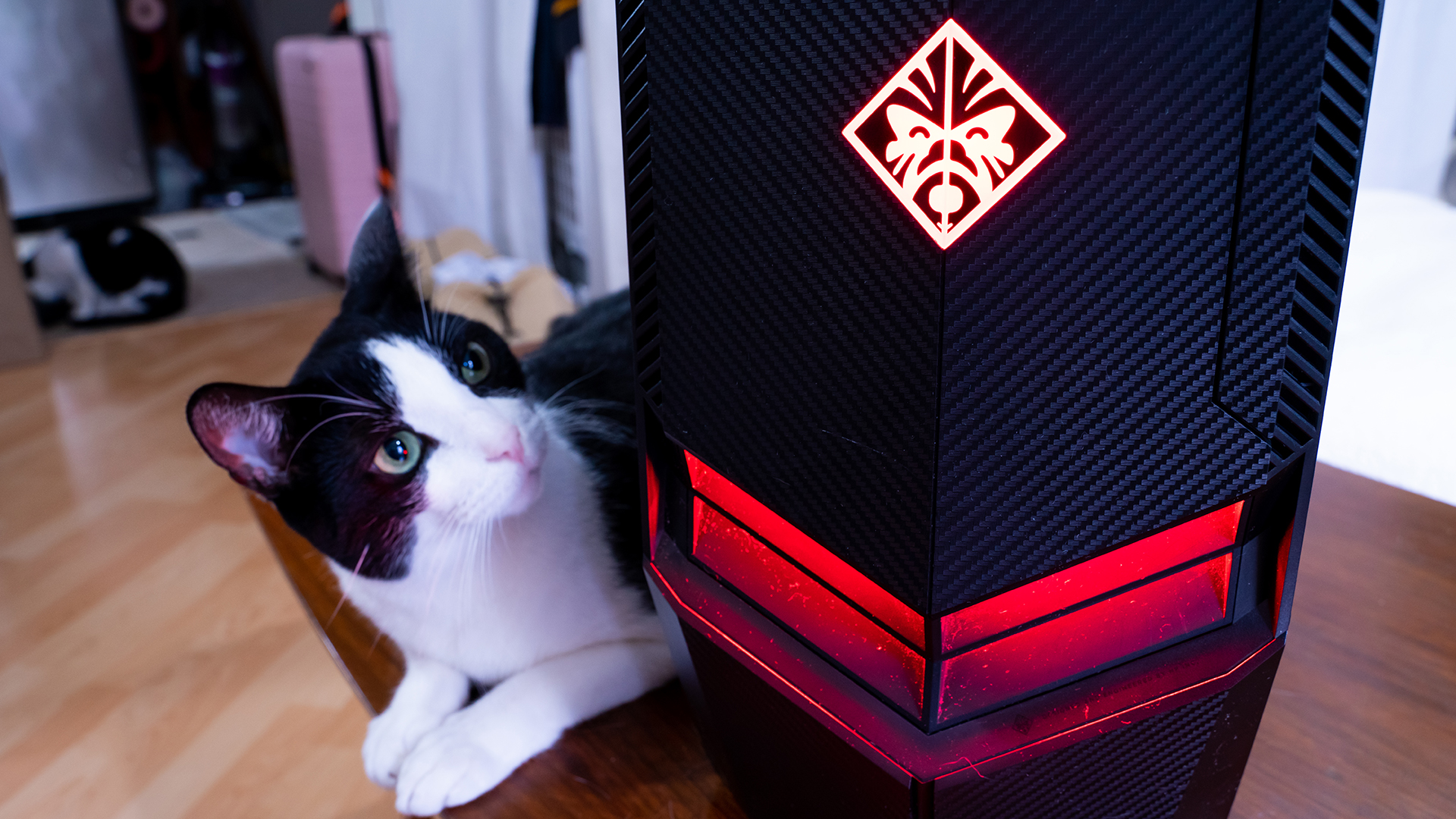

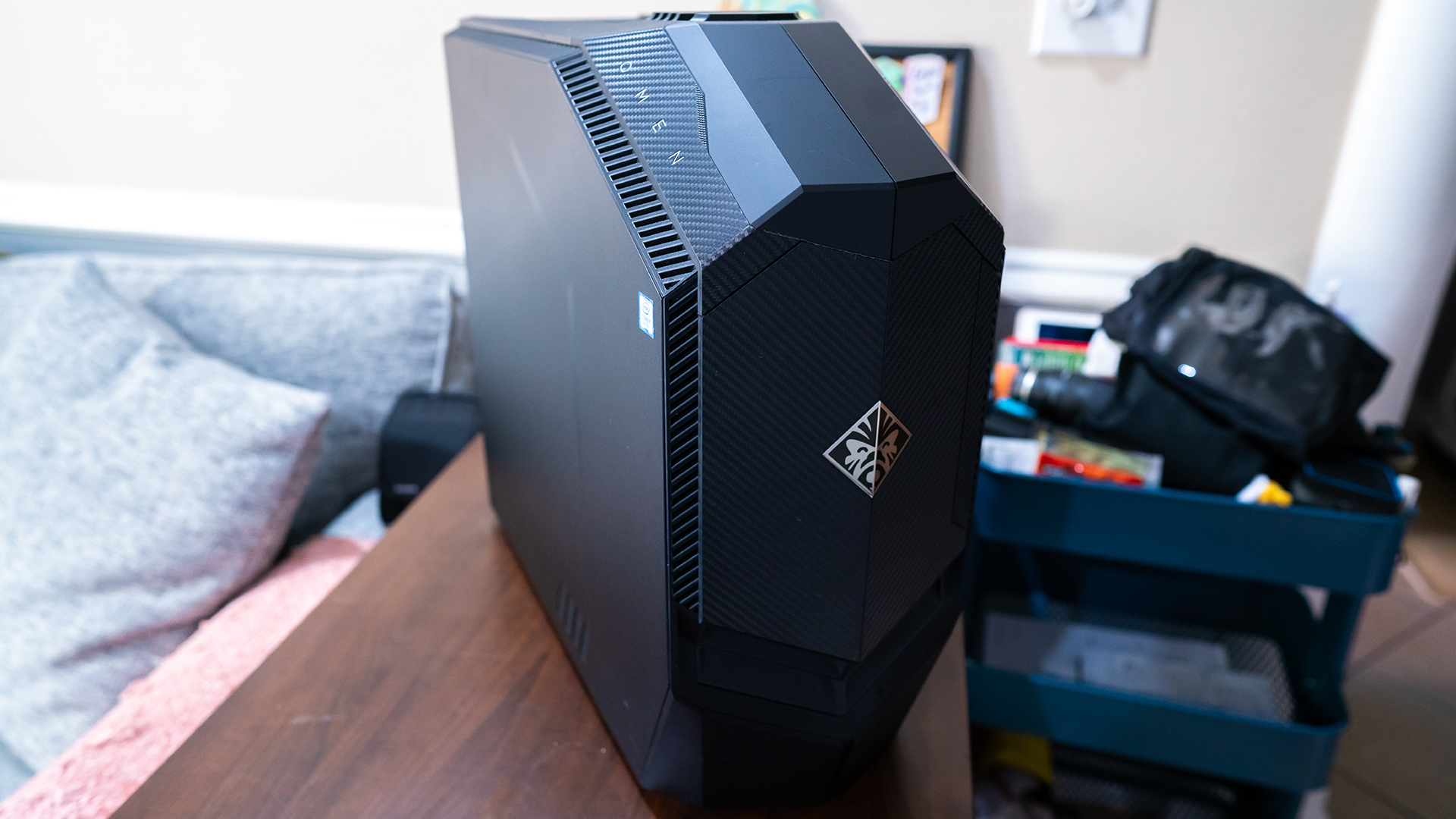
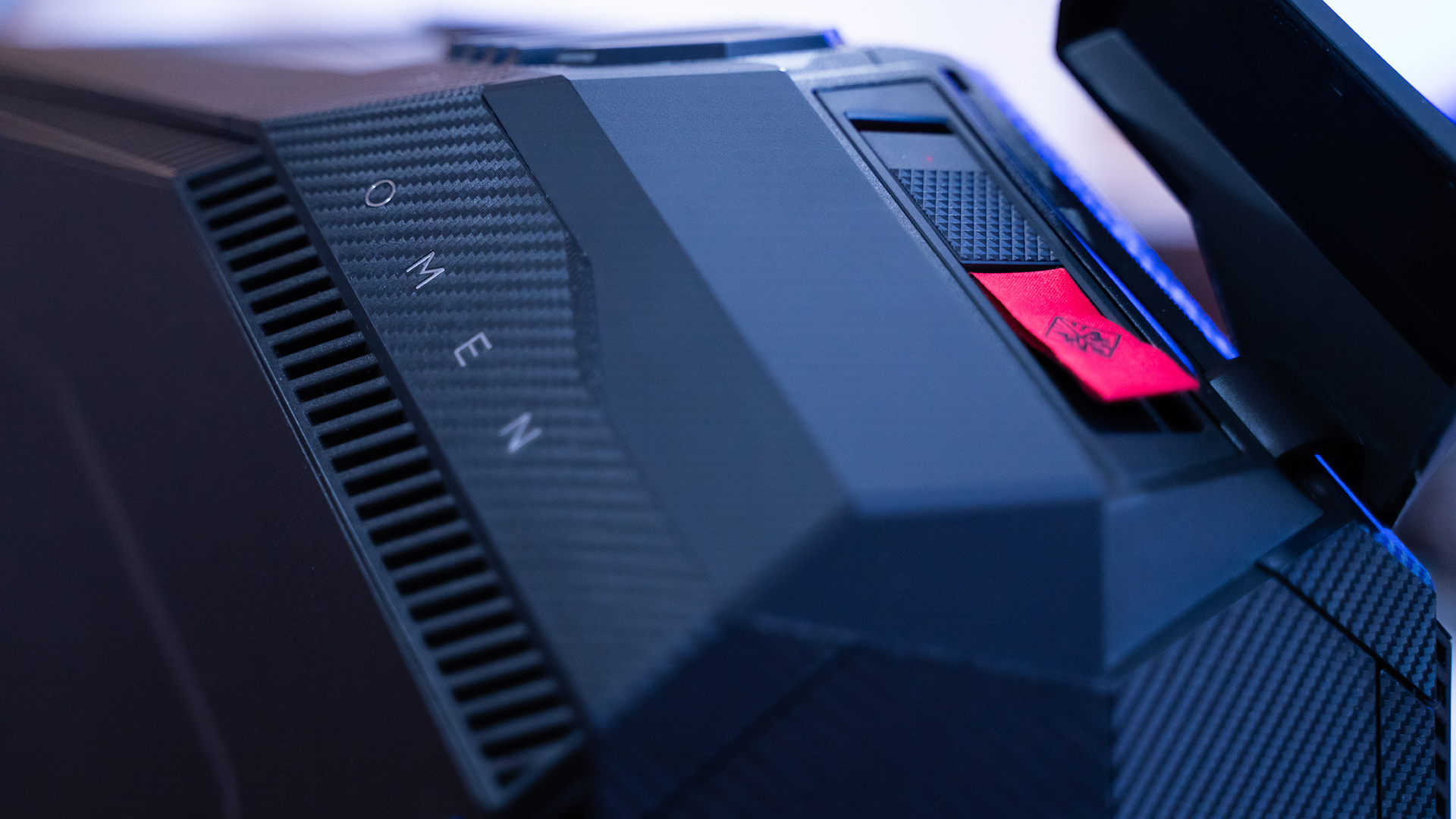
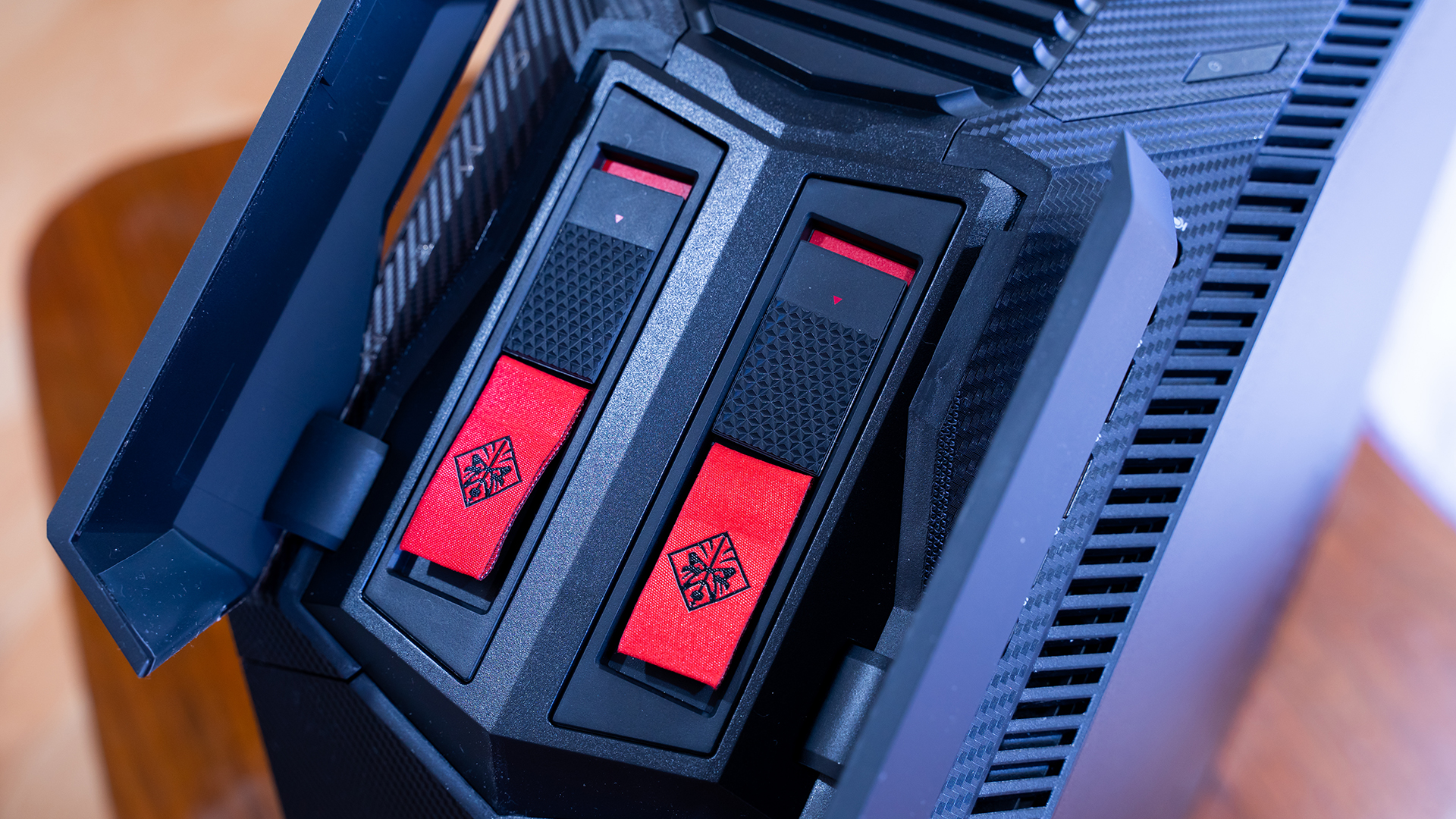

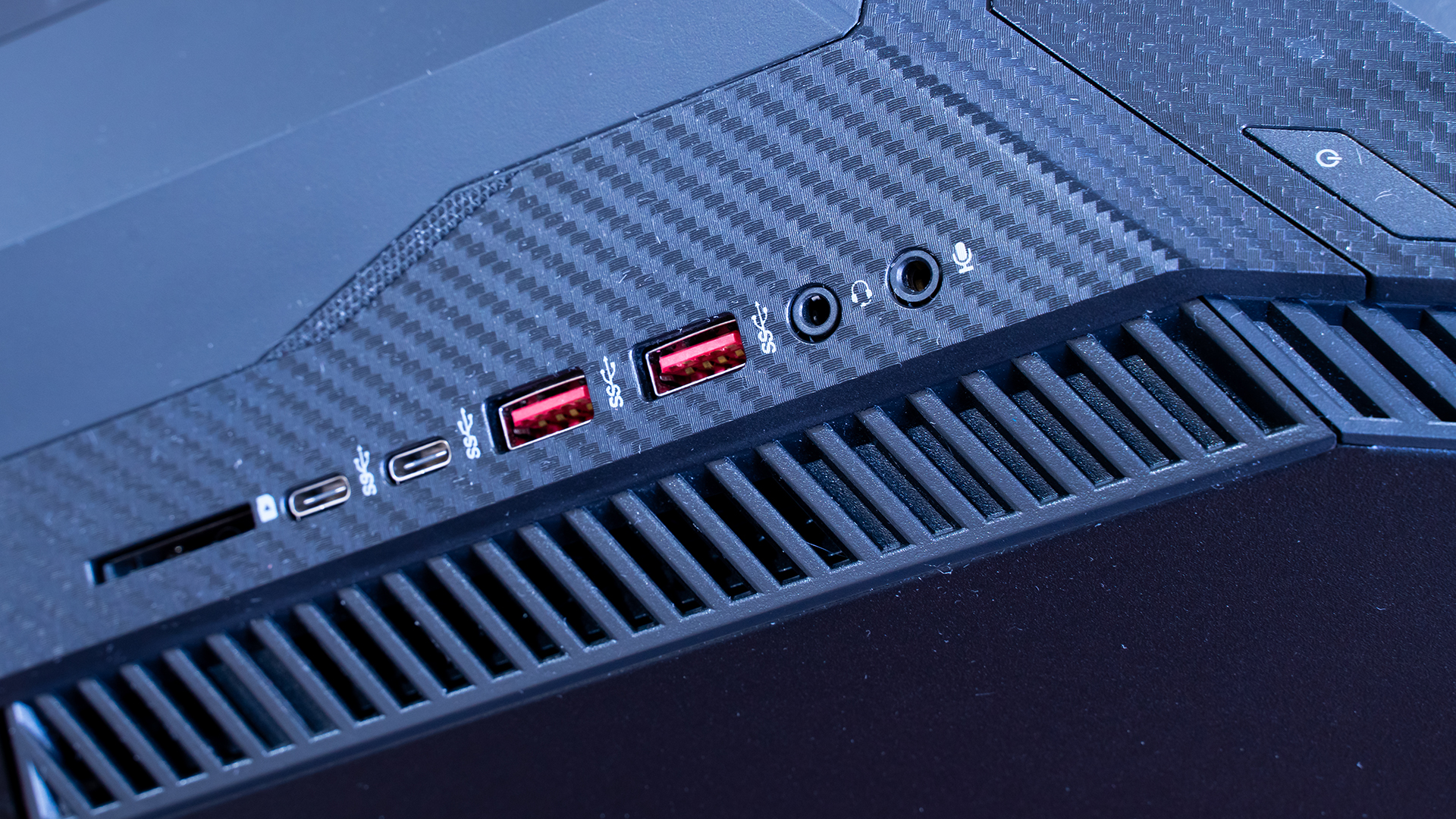


Design
Many folks have commented on the HP Omen Desktop PC’s not-so-appealing design, and we must admit, it isn’t the most attractive looking gaming PC on the market. In fact, its gamer’s look kind of reminds us of a flattened head of a Deception, especially with its red RGB lighting.
It has a subtly textured casing with a rigid facia, the word OMEN etched on its top left-hand side, and the logo wedged front and center blazing red. The red lighting on the black chassis looks aggressive as if you’re going into combat every time you use it. This might be appropriate especially if you’re playing a lot of FPS games, but it doesn’t necessarily appeal to most consumers.
Inside, it isn’t the most attractive either, but seeing as the gaming PC doesn’t have a clear case, the inside isn’t really meant to be seen this isn’t such a big deal. Unlike most powerful gaming PCs, this one isn’t that huge, and will still take up a decent amount of desk space.
Attractiveness and size aside, what we do appreciate about this gaming PC’s design is its accessibility and upgradability, which are obviously far more important. It has been designed so that you can easily access what you need, whether it's the ports or the inside components you need, and you can easily upgrade or add to those components, and they’ve clearly succeeded in that regard.

Thanks to its tool-less design, you can easily access the interior to add more hard drives with very minimal effort. There’s just a large switch in the back to lock and unlock the side panel, and an even larger button above that that you can easily push to pop it open. Additionally, the top front has a hidden compartment that pops open to reveal two HD bays. These bays are easily removable by pulling their red tabs, allowing you to add, remove, and replace extra hard drives, they also lock in place with a switch.
Besides those, there’s also a DVD-RW drive next to the logo in the front on the right-hand side that blends well with the design. You can also easily pop it out by pressing on the cover.
Finally, the HP Omen Desktop PC also has a diverse number of available ports, both in the front on the top, right-hand side and in the back, giving you several options to connect your different devices. It even has an SD card slot up front, which is handy for photographers and videographers.
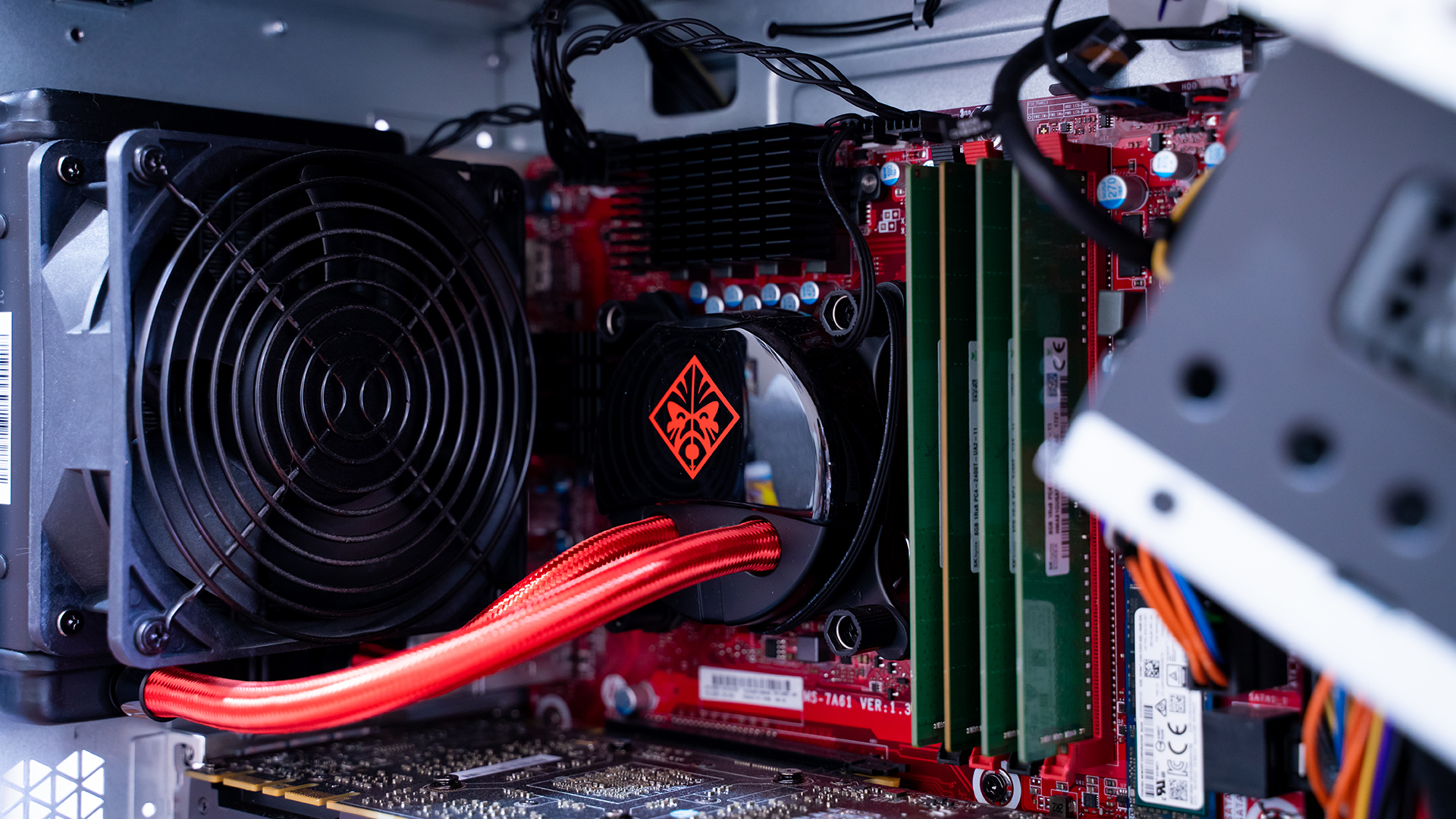
Upgradability
The HP Omen Desktop PC future-proofing not only stems from its power, but its upgradability as well. It has three additional bays for extra hard drives, two of which can be easily accessed by those hot-swap bays we just mentioned, and four slots for RAM. You’ll also find configurations that add liquid cooling and Intel Optane memory.
There’s not much in the way of customization, cosmetically at least. However, you can use HP’s software to overclock, boost your network speeds, and even stream your games from the Omen to a dinky laptop.
The Omen Command Center software has four sections. The first one, System Vitals, allows you to monitor the CPU, GPU, and memory utilization, as well as the temperature.
The next two – Overclocking and Network Booster – allows you to customize your processor and network’s performance.
The Overclocking section specifically gives you an option to run a benchmark to see how the machine is performing. And the last one lets you stream your games from the Omen to any other Windows PC and a decent upload/download speed.

Here’s how the HP Omen Desktop PC performed in our suite of benchmark tests:
3DMark: Sky Diver: 47,081; Fire Strike: 21,485; Time Spy: 3,966
Cinebench CPU: 1,402 points; Graphics: 151.17 fps
GeekBench: 4,789 (single-core); 25,928 (multi-core)
PCMark 8 (Home Test): 5,167 points
Total War: Warhammer II (1440p, Ultra): 65 fps; (1440p, Low): 139.3 fps
Middle-Earth: Shadow of War (1440p, Ultra): 83 fps; (1440p, Low): 155 fps
Performance
When it comes to performance, you’ll be hard-pressed to find a flaw. The HP Omen Desktop PC is a very powerful machine that can run anything on ultra, gaming-wise, without breaking a sweat.
This thing comes with everything you need and more, which means that it can handle anything you throw at it, even the most demanding games, like a hot knife through butter, giving you the most optimal and immersive gaming experience.
We tested the HP Omen Desktop PC with three AAA titles – Shadow of the Tomb Raider, Far Cry 5, and Assassin’s Creed Odyssey – on ultra and did not encounter any issues. There were no perceived texture drops, glitches, or lags.
That’s more than impressive performance, considering that all three not only came out within the last year, but are also open world games that require fast, continuous environment generation and are graphically hungry with lots of atmospheric effects. Even loading times at startup and during fast travel are blazing fast on this PC.
It’s all thanks to the top of the line CPU, graphics card, and RAM the HP Omen Desktop PC has been outfitted with. Our review unit had the Intel Core i7-8700k hexa-core processor, which is built to handle heavy loads, stream 4K UHD vids, and lots of multitasking. It was paired with a 32GB RAM and the NVidia GeForce GTX 1080 Ti, a graphics card capable of handling next-gen gaming demands, multiple monitors and ultra-high resolutions.
With this top-tier GPU, you are most definitely guaranteed zero frame drops and zero stutters even with a monitor that caps at 60Hz. When testing a monitor that could be overclocked to 165Hz and has G-SYNC technology like the HP Omen 27 Gaming Monitor... well, just be prepared to be stunned.
That configuration offers a seamless and super immersive gaming experience well worth its price and is more than you’ll need to handle most processor-hungry games for the foreseeable future.

Final verdict
While we do agree that the HP Omen Desktop PC may not be the best-looking gaming PC out there, it has more than decent upgradability and most importantly, it is one of the best ones when it comes to performance. This powerhouse will run any processor- and graphics-heavy game like butter, giving you a gaming experience so seamless. You’ll feel like you’re part of the game.
This is especially true when it’s connected to the right monitor and running with a high refresh rate. And because it’s so powerful and easily upgradable, it’s also future-proof so it’s basically a long-term investment.
Need more convincing than that? Did we mention that it’s a great value too? Not that it’s the cheapest gaming machine – you can’t take home a high-end performance by being cheap – but its price does make sense for what it brings to the table. Even the budget-minded will appreciate this one.
Image Credit: TechRadar
- Check out our HP promo codes to get the best deal on your next purchase.

Michelle Rae Uy is the former Computing Reviews and Buying Guides Editor at TechRadar. She's a Los Angeles-based tech, travel and lifestyle writer covering a wide range of topics, from computing to the latest in green commutes to the best hiking trails. She's an ambivert who enjoys communing with nature and traveling for months at a time just as much as watching movies and playing sim games at home. That also means that she has a lot more avenues to explore in terms of understanding how tech can improve the different aspects of our lives.